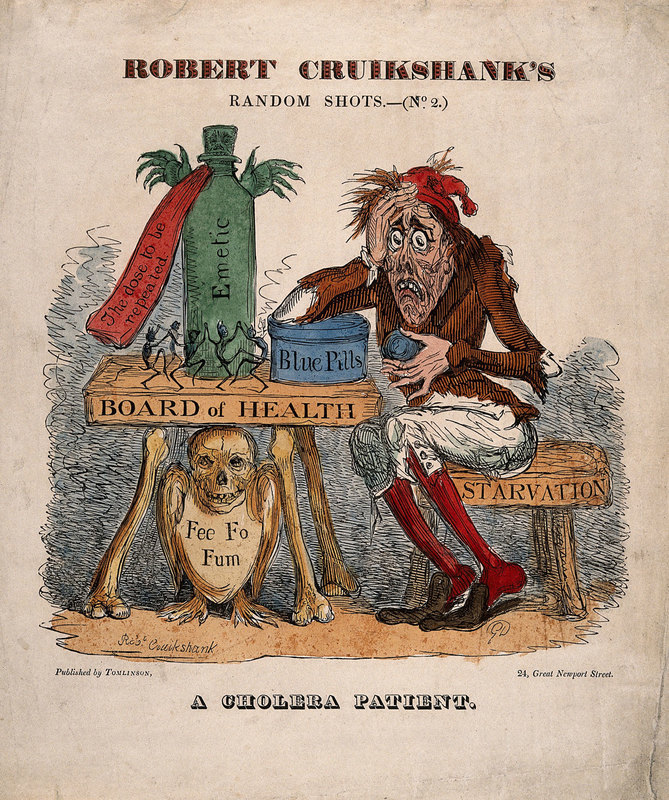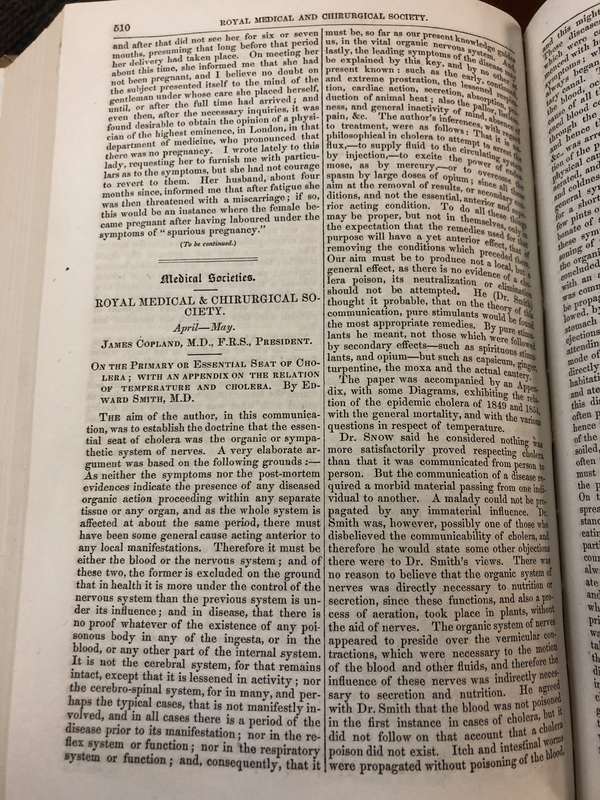The London Lancet
The following primary sources examine findings from different doctors spanning the years 1855, 1867, 1871, 1874 within a medical journal known as the London Lancet. The Lancet was established in 1823 and stands out as one of the most distinguished and venerable medical journals in the world. Its introduction during a period of significant and important medical reforms in England marked the start of a revolutionary era of medical communication, ultimately advancing public health through a platform of intellectual exchange. At the same time as its creation, the Cholera epidemic violently swept through London throughout the 19th century during which the value of the London Lancet was thoroughly tested and proven. Because of its rapid spread, the deadly disease prompted urgent responses from the medical community and thus, during outbreaks, the Lancet served as a critical platform for the dissemination of information and the latest research findings. It pushed timely reports on Cholera cases, research findings, and death tolls in order for the crucial dissemination of knowledge to persist when understanding of transmission and disease was very limited. These four pieces in our collection go over common treatments and remedies that worked in the treatment of Cholera, symptoms of the excruciating disease, and death tolls that resulted from it; the Lancet’s advocacy extended beyond research publications and played a vital role in the mobilization of public opinion and influencing policy. The journal’s coverage of these topics, notably by doctors such as Dr. John Rose, Dr. Cockle, Dr. Pfeufer, and Dr. Coyne, supported sanitary reforms and contributed to the public’s pressure on government officials to take action, thus using its advocacy to slowly get rid of Cholera once and for all.

